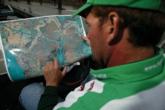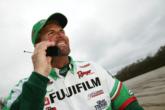Establishing a pattern … no Swett
How to find fish by eliminating water
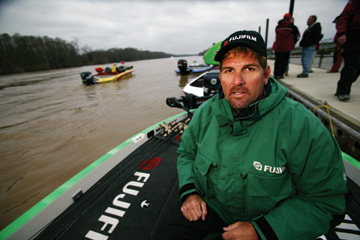
Sam Swett is not sure why the bass were in the spots he was finding them, but each time he pulled into a creek, the Fujifilm team member could look at a line of docks and go directly to the ones that held bass. He was fishing a tournament on a reservoir in central Arkansas, a lake that had thousands of docks along its shoreline. Despite the huge amount of great-looking cover, Swett was able to go from creek to creek and hit only the docks that had bass on them. He established a pattern and ultimately fished his way to a sixth-place finish.
“You couldn’t just say the pattern was a boat-dock pattern,” he said. “It was much more precise than that. I only caught bass from docks on secondary points that were in 10 feet of water with brush under them. The creeks had to have a northern or northwestern exposure as well. Every one of the docks that met those criteria had a bass on it. I fished other docks, but no matter how hard I tried, I couldn’t catch a fish off any except for the ones that fit the pattern.”
That is exactly how the top pros stay on top – they can eliminate water, establish a pattern and go directly to the fish without wasting time pounding cover that is void of bass. Establishing a pattern can be a difficult task, but it is a vital ingredient for a successful day on the water.
Before he makes the first cast of the day, before he even backs his Ranger into the water, Swett has a fair idea of where to start fishing based solely on his intuition as an experienced bass angler. Establishing a pattern, he says, starts from a wider perspective that gets narrowed down through a process of elimination.
“I always try to get ahold of a map,” he said. “A basic contour map is good, but if you can find one that shows bottom composition, that’s even better. With a good map, you can automatically eliminate 90 percent of the lake without ever setting your boat in the water by taking into account seasonal patterns.”
In other words, the Covington, La., pro will look for features that are likely to hold bass during a specific time of year. In the spring, for instance, Swett will search for areas that are most likely to warm up faster and provide spawning habitat. Prior to the spawn, he will focus his attention on water that tends to serve as a staging area for pre-spawn bass – points near the mouths of creeks, creek channels adjacent to shallow flats, etc.
“This time of year, I’ll go straight for the north and northwest banks because they receive more sunlight than the other shorelines,” he said. “I’ve seen some lakes where the north side was 5 or 10 degrees warmer than the shady southern shore. It’s a huge difference in the spring.
“Of course, bass will be in all parts of a lake, but they don’t all do the same thing at the same time. Prespawn bass tend to be easier to catch in warmer water, so that’s what I’m going to focus on this time of year.”
A map, adds Swett, will also help you find similar areas on other parts of the lake, reducing the time it takes to actually establish a pattern.
As helpful as a good map can be, nothing beats current information from a reliable source. The two key words, of course, are “current” and “reliable,” something Swett takes into account when he gathers information prior to hitting the water. Friends who live near a body of water, tackle-shop owners, even the Internet are sources Swett taps for pertinent information that often helps him find fish faster.
He will not, however, pay too much attention to specific details such as the exact lures that other anglers used to catch bass. Specific patterns change daily, even hourly, and anglers can fall into a trap by assuming specific lures that worked previously will work on the day they head to the lake.
“This time of year, a pattern can die pretty quickly,” he said. “The wind can change, the bait can move – anything can mess up a pattern. What I’m looking for when I surf the Net, call tackle shops or talk to other local sources is general information about where the fish are. Are they moving into creeks, or are they still on main-lake points? Mostly, I want to know water color, trends in the lake level, the temperature – things that will help me figure out where to start.”
Go fishing
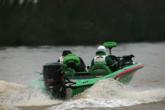 Once Swett has a general idea of what the bass should be doing, he will choose a lure that best fits the situation and go fishing in the neighborhood where he expects to find bass. He does not use a single bait exclusively, however, when he is trying to establish a pattern. Like any skilled bass angler, Swett will have several rods rigged and ready to go, often as many as 10, and will switch back and forth as conditions demand. In other words, if he is fishing for prespawn bass on a typical lowland reservoir with stumps, rocky points, brush and maybe some aquatic vegetation, he will have a Smithwick Rogue, a jig-and-pig, maybe a Carolina-rigged lizard and a lipless crankbait at his feet. Which one he uses depends on the cover and structure at hand.
Once Swett has a general idea of what the bass should be doing, he will choose a lure that best fits the situation and go fishing in the neighborhood where he expects to find bass. He does not use a single bait exclusively, however, when he is trying to establish a pattern. Like any skilled bass angler, Swett will have several rods rigged and ready to go, often as many as 10, and will switch back and forth as conditions demand. In other words, if he is fishing for prespawn bass on a typical lowland reservoir with stumps, rocky points, brush and maybe some aquatic vegetation, he will have a Smithwick Rogue, a jig-and-pig, maybe a Carolina-rigged lizard and a lipless crankbait at his feet. Which one he uses depends on the cover and structure at hand.
Swett works his way through a variety of lures, cover and structure, making sure to fish each thoroughly before he decides the bass are not there. Again, where he starts depends on the specific season and a variety of conditions, but he tends to start on the shallow side and work his way out to deeper water.
How long he sticks with a single area or with a few go-to lures depends on several factors. Most important is his confidence level. If he is certain the fish are in the spots he expects to find them (or if he can actually see them), Swett will spend all day working through different lures until he hits the right one. Often, bass refuse to hit any lure for much of the day but will turn on for no obvious reason. Just because he is not catching them does not mean the fish are not there.
The first fish
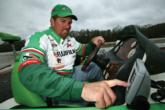 As soon as he catches the first bass of the day, Swett analyzes the entire picture, including such subtle characteristics as the way the fish bit his lure. In other words, the pattern does not begin and end with a bass caught off a secondary point.
As soon as he catches the first bass of the day, Swett analyzes the entire picture, including such subtle characteristics as the way the fish bit his lure. In other words, the pattern does not begin and end with a bass caught off a secondary point.
“The biggest mistake anglers make when they catch a fish is that they don’t really examine the exact spot the bass came from,” he said. “Sure, you caught it off a point, but was the fish on a stump or a brush pile, or was there something else that you don’t know about that was holding that bass? At what depth was it?”
Swett will ease over the exact spot with his electric motor and study his depth finder to figure out why that bass was there. While a map is a great tool for finding basic structure, it will not show such minute details as a slight hump on the end of a point or a brush pile dropped by an ambitious crappie angler. By finding such detailed clues, a huge amount of water can be eliminated.
That is exactly what he did when he found willing bass holding on docks in 10 feet of water during a tournament several years ago. Patterns can be as broad as you like, but in order to catch more bass in a day on the water, it is vital to narrow your pattern down to a few specific ingredients.
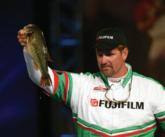 Spring’s ever-changing patterns
Spring’s ever-changing patterns
Figuring out prespawn bass can be tough, but when fast-moving weather fronts push across your favorite lake, deciphering a pattern can seem impossible. What worked an hour ago may not catch a bass the rest of the day. However, bass that were holding in shallow water prior to a cold front will likely be in the same general area.
“Weather can affect bass much the same way heavy fishing pressure affects them,” Swett said. “They tend to back out to deeper water or go deeper into thick cover. If you fish slower and deeper or put your lure deeper into cover, you’ll stand a good chance of establishing a new pattern.”
